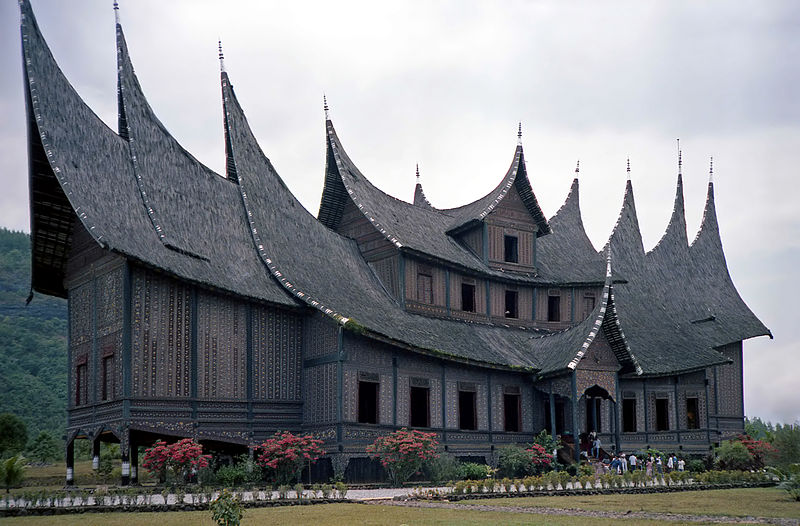News & Events
Are the people of Negeri Sembilan Malaysia of Minang descent?
- September 3, 2020
- Posted by: ASEAN
- Category: Budaya INDONESIA Malaysia

Since the 14th century, Negeri Sembilan, is never out of the political turmoil in the Malay Peninsula. Heavy fighting involving Aceh, Portuguese, Negeri Sembilan and Johor to become the most strategic land war.
The hot atmosphere on the peninsula continues. In 1614, when the Dutch Government succeeded in seizing the city of Malacca. Johor Malay kingdom is being threatened people of Aceh and the Netherlands. This makes the government unable to protect Malay Johor, Negeri Sembilan.
Because it could not, the government invited the Johor Malay Bugis Daeng Kamboja to oust his opponent. “This cooperation was successful, Daeng Kamboja and Johor beat back opponents from the east coast of Sumatra, the west coast of Borneo, and the Peninsula,” wrote Asmaniar Z Idris in Tracing the History of the Minangkabau.
The atmosphere in Negeri Sembilan is completely calm. The Bugis who felt a big role in driving out Johor’s opponents began to act. They took turns occupying Negeri Sembilan. Evidently, Raja Ketjil, a descendant of Siak and Bugis, used to be the king there. But it did not last long, because it was not strong enough to be monthly, King Ketjil was killed by the people of Negeri Sembilan.
Contact Pagaruyuang
Finally in the 18th century, Negeri Sembilan sent envoys to King Pagaruyuang or now known as Minangkabau. They were sent with the intention of asking a king to lead Negeri Sembilan. After negotiations, King Malewar (1773-1795) was finally appointed to be Dipertuan Negeri Sembilan, representing the King of Nature Pagaruyuang.
At that time, Pagaruyuang was under Dutch influence and Negeri Sembilan was under British influence. In these times the relationship between the two becomes strained. However, the severance of relations is only in the case of territorial administration.
In the field of culture, both still retain strong memories. Both countries have many basic similarities, such as traditional clothing, traditional house shapes, traditional ceremonies, lineage patterns from the mother line, music, the color of greatness, and food such as rendang.
The similarity makes many people think that the people in Negeri Sembilan are none other than Minangkabau people. Is that assumption true?
Similar But Not The Same
Researchers at the University of Tokyo Japan, Kato Tsuyoshi, say there are differences between tribal names in Negeri Sembilan, Malaysia, and tribal names in Minangkabau, Indonesia.
“The Minang community is famous for its regional culture, and one of the regions that is the region of the region is Negeri Sembilan in Malaysia,” he said in a public lecture at the Faculty of Cultural Sciences, Andalas Padang University as reported by Antara.
After comparing several systems in the community in Negeri Sembilan, it turns out that there are some differences with the Minang culture, one of which is from the names of the tribes. Tsuyoshi says in 1972-1973, Minangkabau was the oldest and most populous area with a recorded composition having 96 tribal names.
The ten largest tribes in Minangkabau based on geographic distribution are Chaniago, Malay, Piliang, Tanjuang, Koto, Jambak, Sikumbang, Mandahiling, Pitopang, and Guci. While in Negeri Sembilan there are approximately 13 tribes, while some of the names of these tribes are the names of regions in Minangkabau.
The tribes in Negeri Sembilan, he continued, include Biduanda, Tanah Datar, Seri Lemak Pahang, Seri Lemak Minangkabau, Payakumbuh, Seri Melenggang, Tiga Batu, Tiga Grandma, Mungkal, Batu Belang Batu Hampar, Acehnese Children, and Melaka Children.
From these tribes there are similarities in the names of several areas in Minangkabau. Researchers consider the people of Negeri Sembilan to be ancestors of the Minang people.
Source : merahputih, Antara
Leave a Reply Cancel reply
You must be logged in to post a comment.